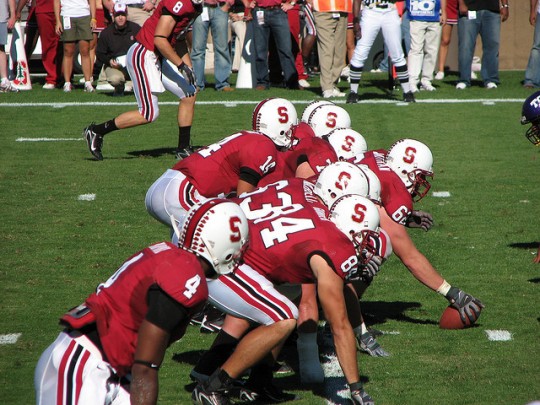Using high-tech devices to study football and concussions
Using high-tech devices to study football and concussions
In case you didn’t see it, a recent Contra Costa Times article provides a closer look at an ongoing study during which Stanford University football players are equipped with mouthpieces containing high-tech sensors to advance medical understanding of concussions in football. The story recounts a recent example of how the special high-tech mouthpieces are providing important information about players’ health following forceful hits:
When a hard-driving Oregon State cornerback slammed into Stanford’s standout receiver Chris Owusu on Saturday, the helmet-to-helmet hit gave Owusu his third concussion in 13 months.
But this time, Owusu’s high-tech mouth guard recorded the force of the hit, how hard he hit the ground and how much his brain twisted inside his skull.
The Stanford senior and 19 teammates this season began using the special mouthpieces with sensors that measure the force of head movement — the beginning of an urgent study into the growing phenomena of head injuries plaguing contact sports from high school to the pros.
…
Stanford is the first university in the nation to conduct field research with the mouth guard at the college level. This new study begins as concerns spread nationwide about the brain injuries that affect some 1.6 million to 3.8 million yearly who engage in sports and recreational activities.
Next year, Stanford researchers play to expand the study to include the university’s women’s field hockey and lacrosse teams. Some NFL players may also start using the impact sensors next season for a separate study, as the story notes.
By Lia Steakley
Stanford School of Medicine
Photo credit Brian Cantoni
###
* Stanford University Medical Center integrates research, medical education and patient care at its three institutions – Stanford University School of Medicine, Stanford Hospital & Clinics and Lucile Packard Children’s Hospital.
** The above story is adapted from materials provided by Stanford University School of Medicine
________________________________________________________________





















